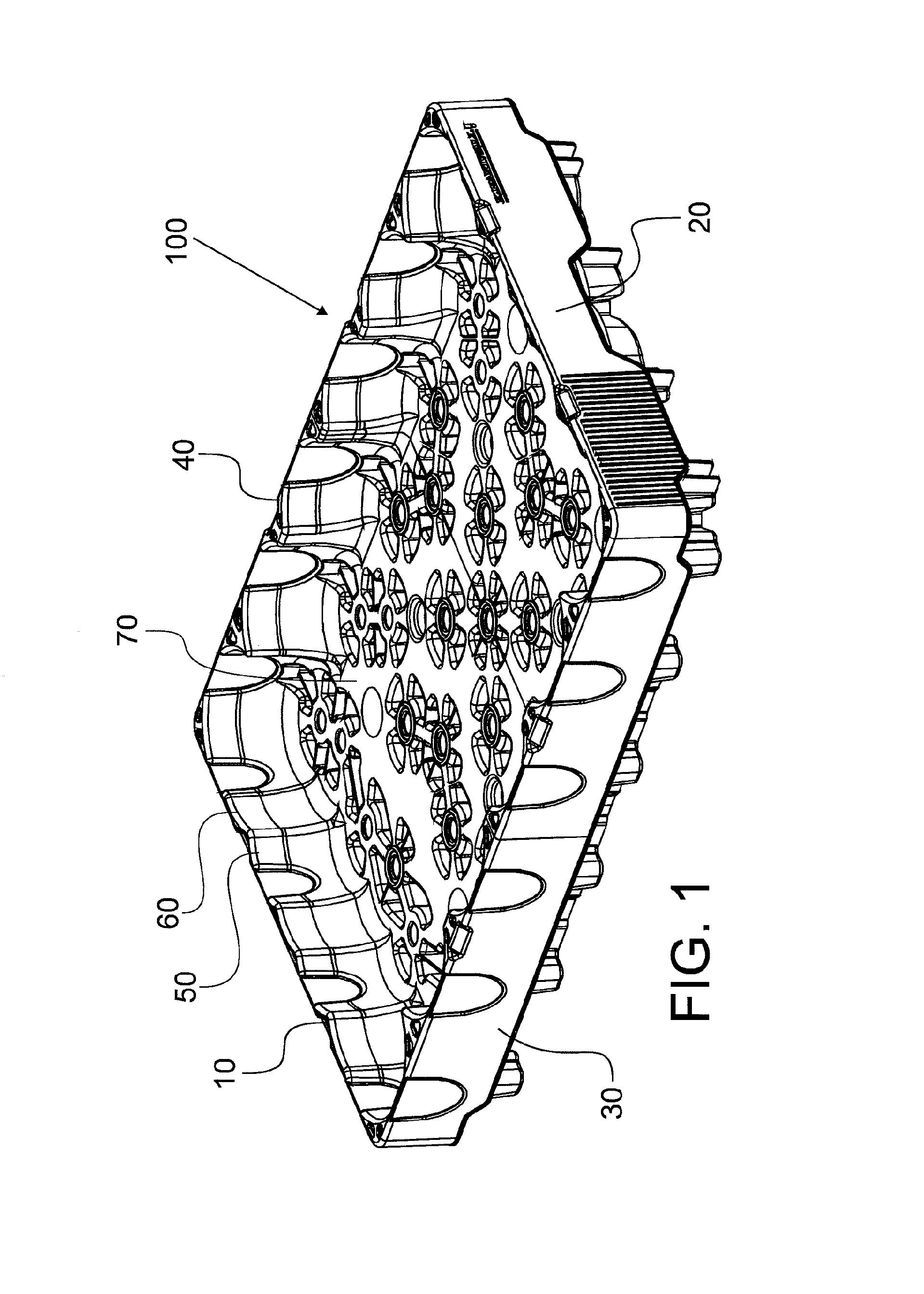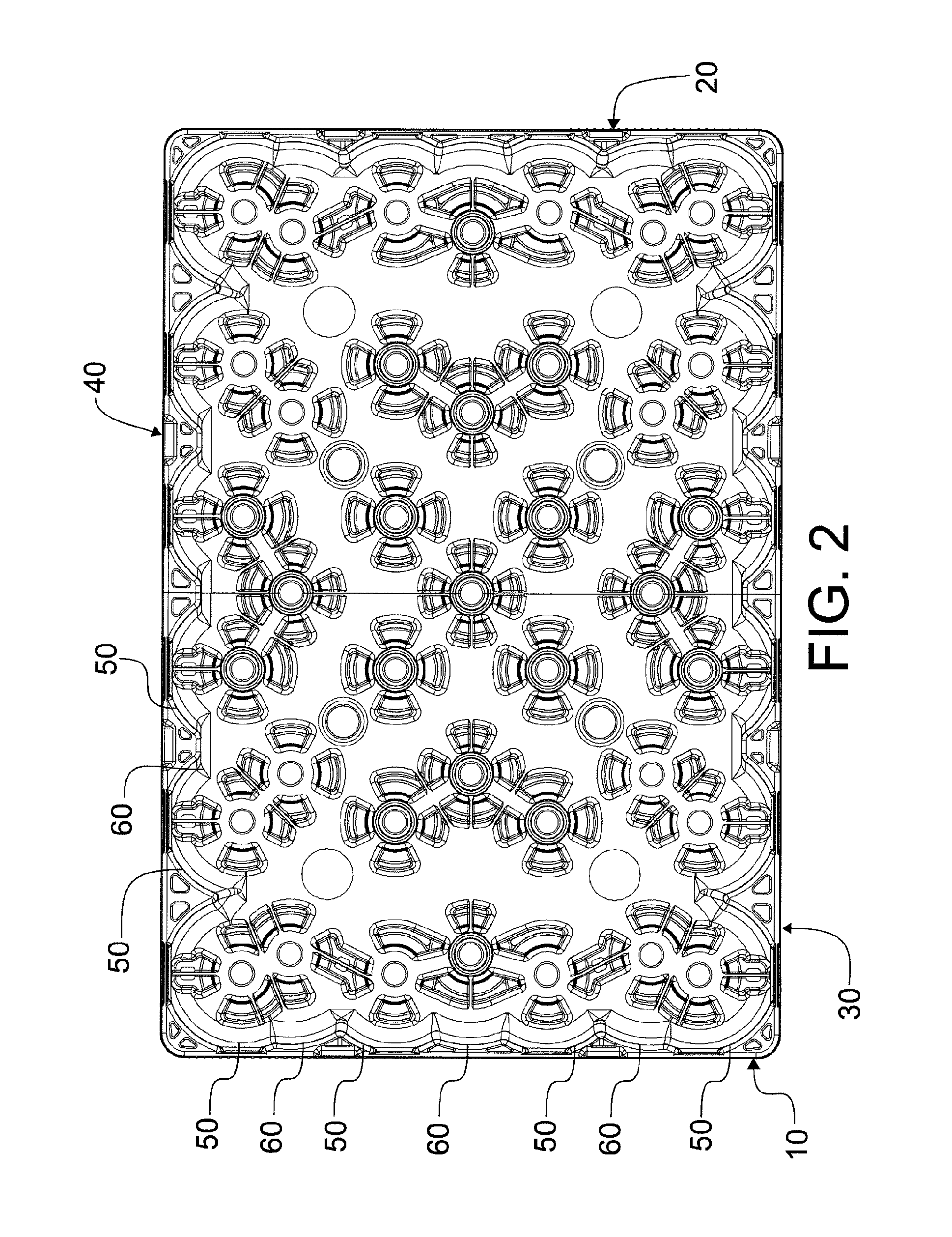Cell tray
a cell tray and trays technology, applied in the field of logistics equipment, can solve the problems of increasing warehousing costs, not only logistics and warehousing, but also production planning, and achieve the effect of reducing the variety of load carriers
- Summary
- Abstract
- Description
- Claims
- Application Information
AI Technical Summary
Benefits of technology
Problems solved by technology
Method used
Image
Examples
Embodiment Construction
[0017]As can be seen from FIGS. 1 to 4, the cell tray 100 has a conventional basic structure featuring a quadrilateral base 70 which is surrounded by four lateral edges 10, 20, 30, 40 chained together for surrounding the base 70 such that the lateral edges 10, 20, 30, 40 provide lateral support for the contents of the cell tray 100 in all four lateral directions. In the figures the first and second lateral edge 10, 20 are arranged to oppose each other in parallel. The third and fourth edge lateral 30, 40 are arranged to oppose each other in parallel but orthogonally to the first and second lateral edge 10, 20, whereby a loading pattern may be formed between the lateral edges 10, 20, 30, 40 on the loading surface 71 of the base 70. Each lateral edge 10, 20, 30, 40 is provided with a plurality of subsequent primary recesses 50 which are adapted to receive the outer envelope surface of the bottle in an embedded manner. The primary recess 50 therefore has a radius r50 which corresponds ...
PUM
| Property | Measurement | Unit |
|---|---|---|
| diameter | aaaaa | aaaaa |
| diameter | aaaaa | aaaaa |
| diameter | aaaaa | aaaaa |
Abstract
Description
Claims
Application Information
 Login to View More
Login to View More - R&D
- Intellectual Property
- Life Sciences
- Materials
- Tech Scout
- Unparalleled Data Quality
- Higher Quality Content
- 60% Fewer Hallucinations
Browse by: Latest US Patents, China's latest patents, Technical Efficacy Thesaurus, Application Domain, Technology Topic, Popular Technical Reports.
© 2025 PatSnap. All rights reserved.Legal|Privacy policy|Modern Slavery Act Transparency Statement|Sitemap|About US| Contact US: help@patsnap.com



